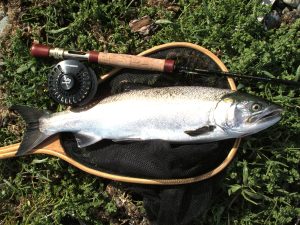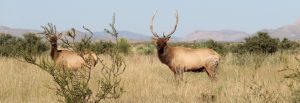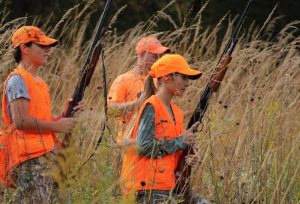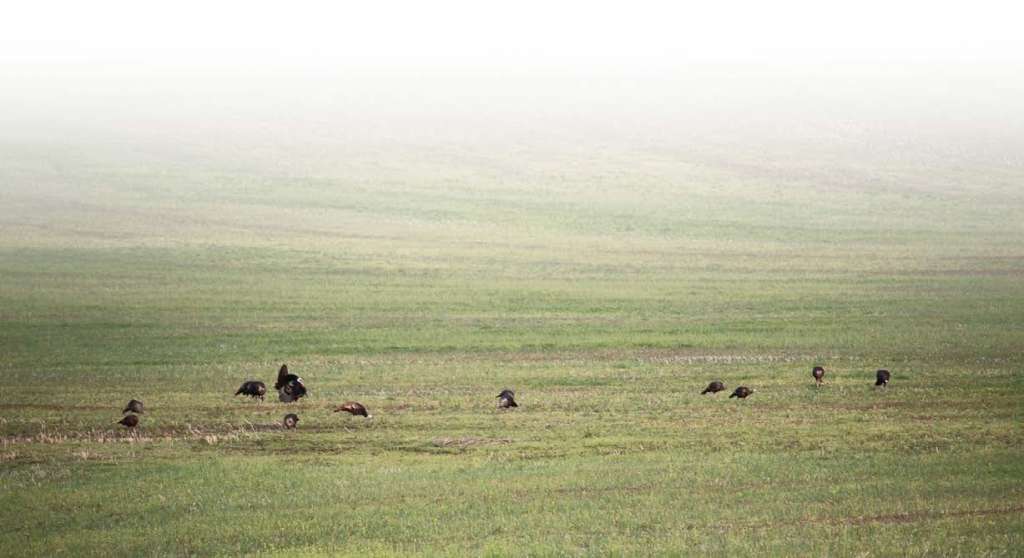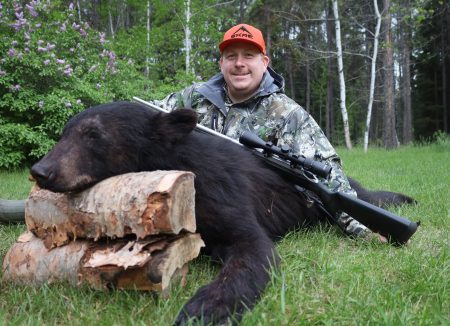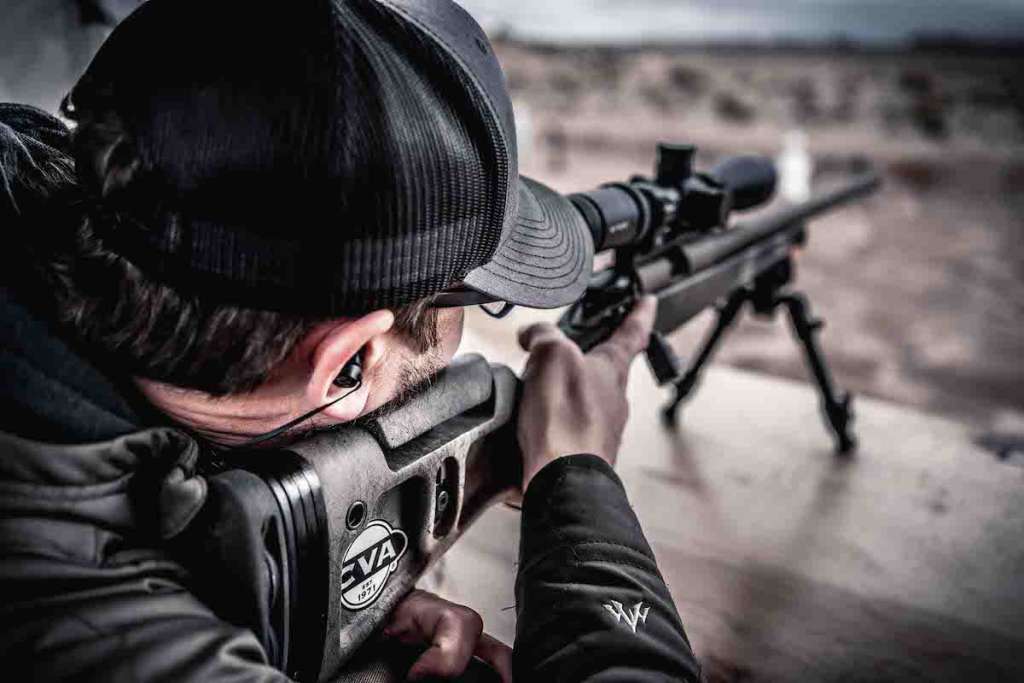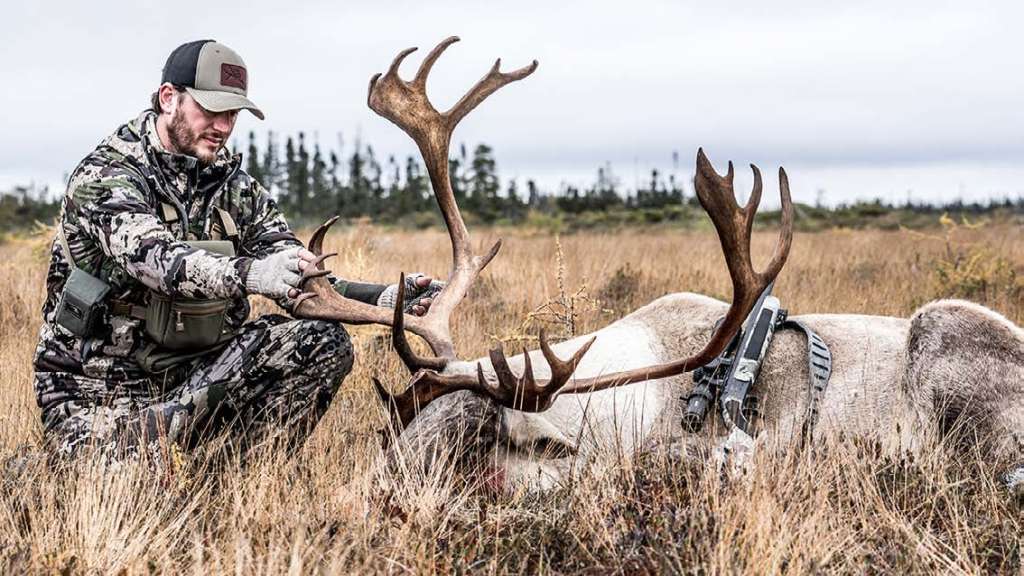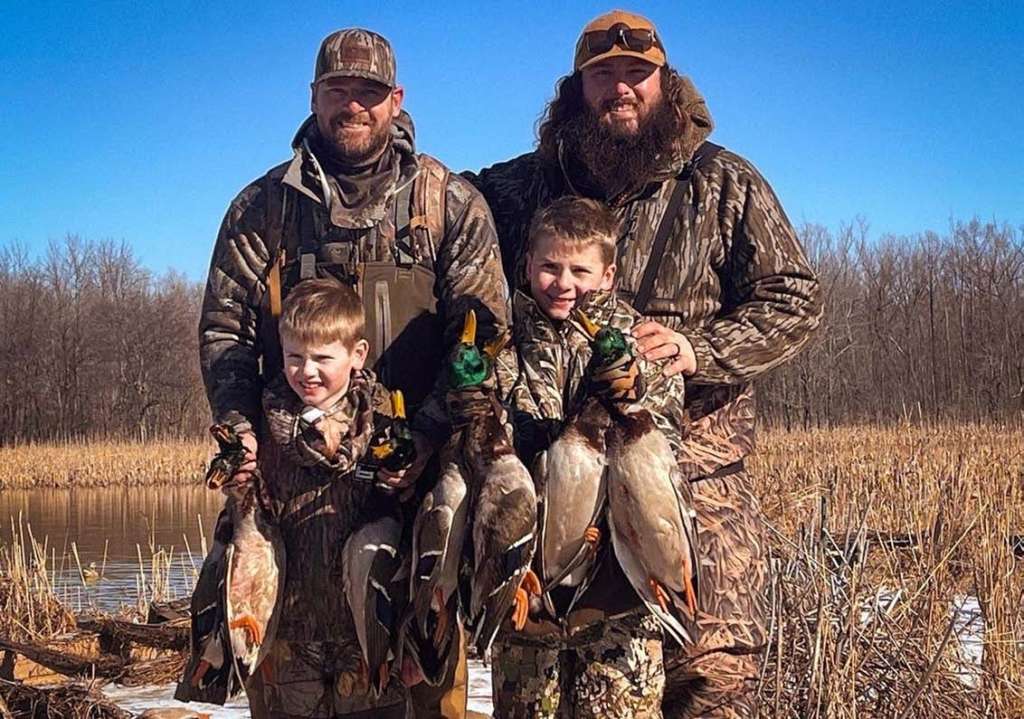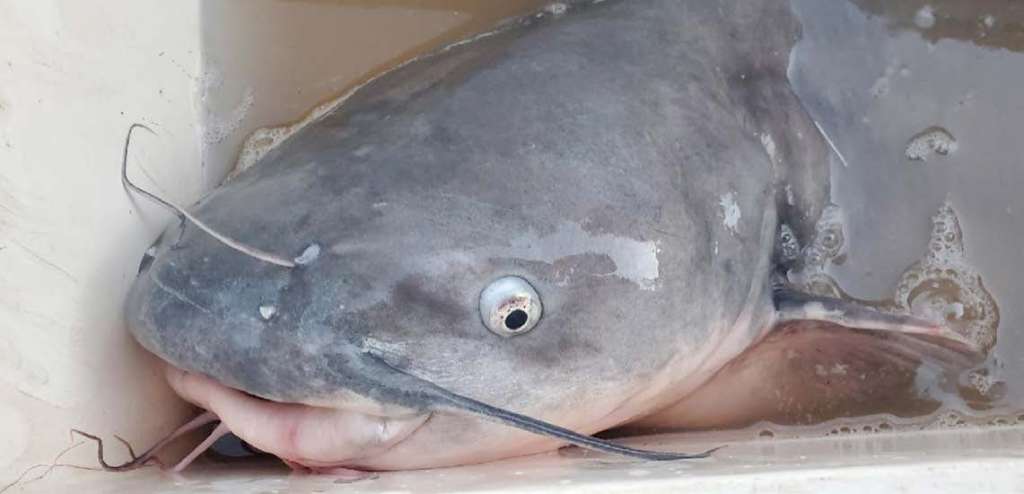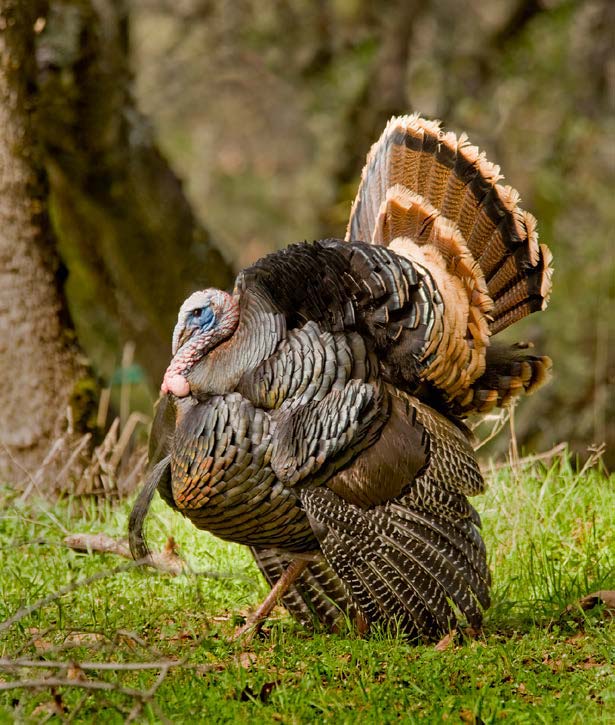The Challenges of Bowhunting Wild Turkeys
Those who bow hunt turkeys are up against a big challenge. They’re working hard to overcome significant odds. As such, they need all the knowledge and help they can get to fill that archery turkey tag. Here’s a detailed guide on bowhunting wild turkeys.
The Right Equipment
Selecting the right bow and arrow setup will vary for each hunter. I personally prefer a bow with a shorter axle-to- axle, especially if bowhunting on the ground without a ground blind.
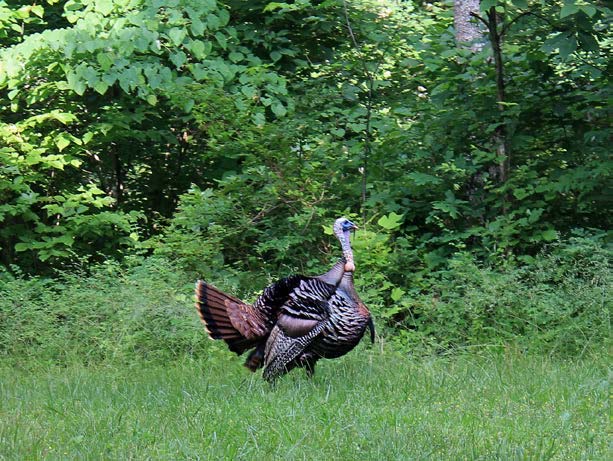
Selecting a broadhead is more universal, though. Some bowhunters like to aim at the head and use a guillotine. But the odds of hitting the kill zone around the heart and lungs is much greater, especially for archers with less experience. So, body shots are more advised, and two-bladed mechanical broadheads are my personal favorite.
Why? Turkey anatomy is relatively small in size. The kill zones aren’t large, and millimeters can determine the difference in success or not. So, I prefer the most accurate-flying broadheads, and those are often two-
bladed mechanicals. I also like a large cutting diameter. An extra quarter or half-inch can mean the difference in taking out the heart or lungs on a longbeard. Lastly, with turkeys, you don’t want a pass-through. You’re better off if the arrow remains in the body of the bird, because it continues to sever vitals and can also help prevent turkeys from flying or running, which allows you a quick, ethical follow-up if needed. A mechanical head with a lot of cutting surface tends to get less penetration, which again, is a good thing on turkeys.
Scouting for Turkeys
Scouting is important regardless of the weapon you use, but it becomes even more important for bowhunters. Because mobility is decreased, there is more that can go wrong. So, as a bowhunter, fine-tuning your scouting is crucial.
First, know where roost sites are located. Sign to look for includes J-shaped droppings under limbs (toms and jakes), spiral-shaped droppings under limbs (hens), primary wing feathers, and tracks pointing in multiple directions.
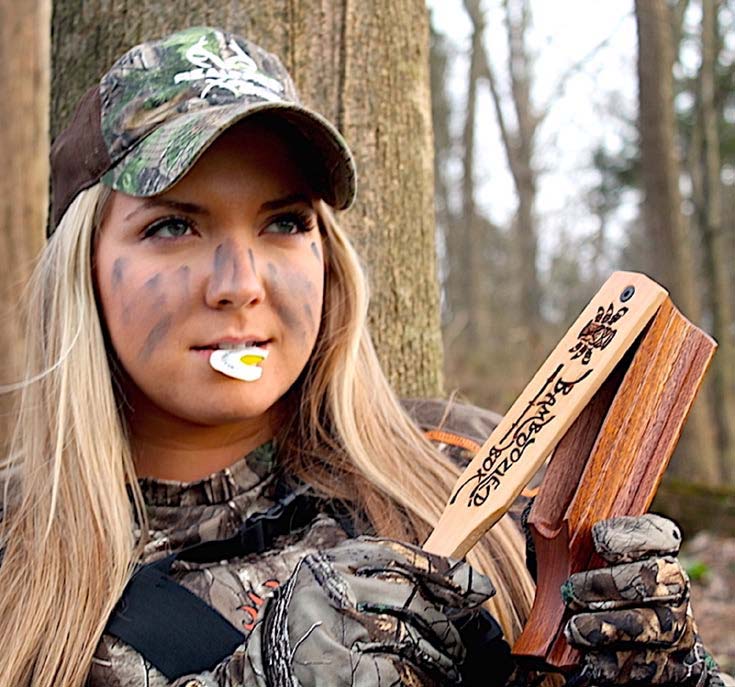
You also need to know where travel routes are located. Things that often identify these route include tracks pointing mostly in two directions, moderate numbers of droppings, dust bowls, black-tipped breast feathers (toms), gold-tipped breast feathers (hens).
Feeding destinations are very important, too. Acorns, food plots (chufa, clover, wheat), ag fields, freshly disked fields, bugging areas (pastures, wet ground, etc.), and other locations can provide food. To identify that turkey are using these areas, look for tracks in all directions, tom tracks (2½-inch middle toe larger than outside toes), hen tracks (less than 2½-inch middle toe same length as outside toes), droppings, scratching, and strut marks.
Water sources are used by turkeys, too. They get a lot of water content from dew, green food sources, and bugs. But they also visit water sources, especially during dryer conditions.
Knowing where strut zones are located is also good. This is where strutters post up for the ladies. These are areas where gobblers spend the middle half of the day and are generally locations where they can see and be seen. Flats, hilltops, benches, ridges, roadbeds, creek banks, and other similar features seem to be typical hotspots. In these areas, look for tracks in all directions, lots of strut marks (wings dragging), and more tom droppings than hen droppings.
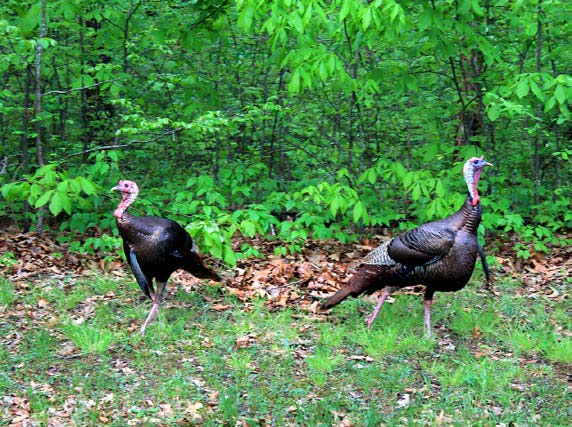
Trail cameras can help turkey hunters, too. Fortunately, there are things you can do to increase the effectiveness of your cams:
- Hang them at landing zones near roost
- Place them along known strut
- Post them in good pinch
- Focus on fence gaps with hard-to-cross fence types, such as five-strand that’s low to the ground.
- Locate along logging roads that connect roost sites and food sources.
- Set them over heavy sign, regardless of the location type.
- Focus on inside field corners near roost
- Set them along feeding sites where you’ve historically seen turkeys.
- Run them along travel routes with excessive
- Consider past kill sites as spots to post
- Hang them lower than when scouting for deer— turkeys are short.
After cameras have soaked for a while, pull cards, and then compare your findings to what you discovered while scouting in the field. Use all of this to pull together a good game plan for opening day.
BASIC HUNTING TIPS
There are many things bowhunters should know before hunting turkeys. Some of these are considered quite basic, and among them are these tips. Remember Scouting Discoveries: The hunt is on, and now you can’t find or hear birds? Sometimes turkeys don’t vocalize due to temperature or weather conditions. Don’t freak out, though, because you scouted. Have faith in what you learned. Listen to your gut. If it’s really telling you to call an audible, do so.
Get Comfortable
Bowhunting turkeys can require you to remain motionless for long periods—especially if hunting without a ground blind. You can’t do that if you aren’t comfortable. Wear comfortable boots and clothing. Tuck into a comfortable setup. Spend a few extra minutes making sure everything is in place before the action starts. That will be important if a turkey hangs up for a while or takes a long time to close the distance.
Range Landmarks in Advance
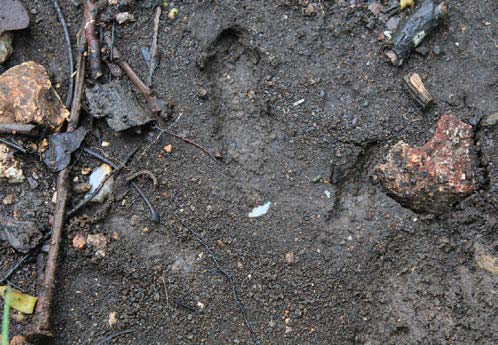
In general, you won’t be able to move when a gobbler gets close. So, range landmarks around you beforehand. Stumps, fence posts, trees, bushes, decoys, and just about anything else can serve as a good range landmark. If a bird is close by one of them, you’ll know about how far it is.
Have Extra Arrows Ready
Missing a turkey is easy, but follow-up shot opportunities are common. So, take an arrow or two out of your quiver and lay them on the ground beside you.
Run Two Calls
Friction calls are great for locating and calling turkeys, but they require movement. Plus, it’s hard to hold a bow and call. So, use those friction calls when birds are afar, but use diaphragms as they close the distance.
Know When to Draw
A turkey will likely see you drawing your bow. Make sure their attention is fixed on the decoys before doing so. Or wait until something is obstructing their view, such as when a tom is in full-strut and looking away from you, or when it’s behind a tree. If a turkey spooks before the draw, draw as you set your pin on the bird. If it’s close enough, and your skills good enough, you may have to take the shot on a walking bird.
Understand Turkey Anatomy
The best shot is when a tom is in full strut and facing straight away. Aim for the spot where all the tail feathers meet. The best broadside shot placement is the wing butt.
ADVANCED TURKEY HUNTING TIPS
Other tips offer advanced knowledge beyond the basics. That extra knowledge is often the difference between success or failure.
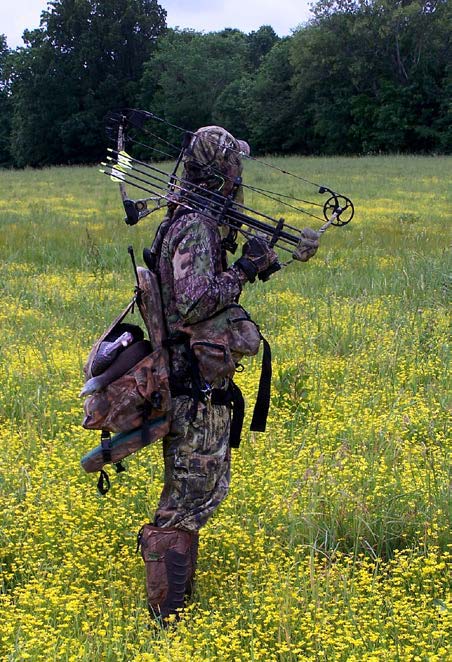
Use Apps and Maps
Apps and maps are very valuable tools for bow hunting turkeys. These allow you to locate potential roost sites and feeding destinations. They also reveal potential clearings, fields, ledges, benches, and other hotspots for strut zones. Digital scouting tools and apps, such as HuntStand, not only help you better understand the land you’re hunting, but also show you property lines. That can be a huge asset when you’re trying to make a move on a turkey that you’ve been working all morning.
Direct Traffic with Decoys
Strategic decoys placement can get turkeys to do what you want them to. But don’t just draw them in. Place them strategically so birds will come in and stand in the exact position you need to get a clean shot. Most of the time, a dominant gobbler will come in, circle a male decoy, and face it head on. By pointing a jake or strutter decoy in your position, that turkey look will look straight away from you at some point. That’s the perfect time to draw your bow.
Read Turkey Behavior
Not all turkeys behave the same. A calling or decoying tactic that will work for one may not work on another. That’s why it’s vital to take that bird’s temperature and see how it is reacting to your calling. Adjust as necessary.
Practice Odd Shot Angles
Weird, awkward, strenuous shot angles are common — especially when sitting on the ground. Practicing these will help prepare for the moment of truth when a gobbler is in range.
BOWHUNTING TURKEYS WITH A GROUND BLIND
Most who bow hunt turkeys do so from a ground blind. There are certain things you can do to improve the odds, though. Stack these in your favor by checking certain boxes.
Use Scouting Knowledge
Blind placement is very important. Use your scouting efforts to determine the right spot, and the correct direction to face it.
Place Blinds in the Middle of Fields
Turkeys don’t spook from blinds the way deer do. Sometimes, the best thing you can do is place a ground blind right in the middle of a field with a good decoy spread.
Secure the Blind
Regardless of the location, it’s important to stake and tie it down. If you don’t, it likely won’t be there upon return.
Use a Good Chair
You’re likely going to be there for a while. Have a comfortable chair to sit in.
Keep Windows Closed
It’s important to keep the interior of the blind dark. Keeping as many windows closed as possible is the best way to do that. Also, wear dark clothing.
Use Silent Windows
You might have to open a window to shoot, especially if a turkey hangs up or starts to leave. Loud windows won’t allow you to do that, though.
Soundproof Everything
Rake away all leaves and debris away from under the blind. If you make noise, the gig is over.
Practice Drawing
Draw your bow before the hunt begins. Make any necessary adjustments in the blind.
Watch Your Broadhead
Make sure no blades have deployed before drawing. Also, once at full draw, before taking the shot, make sure the broadhead won’t clip the blind.
BOWHUNTING TURKEYS WITHOUT A GROUND BLIND
The latest trend is bowhunting turkeys without a ground blind. Being able to do so takes a lot of effort, skill, and even a little luck. Keep the following in mind.
Prep Equipment
You need to be able to shoot efficiently and effectively from a sitting position to score on turkeys. Shoot a shorter axle-to-axle bow.
Add Cover
Consider adding some cover to your bow. Just be careful not to wrap any twigs, vines or leaves around moving parts on the bow, or it’ll be a bad day for you.
Know Your Birds
It’s important to know the turkeys you’re hunting. Plan and scout those turkeys so you know what they’re patterns are.
Set Up in the Right Spot
Your setup location is always important when turkey hunting. Understanding what a quality setup looks like is crucial. Use a turkey vest that has a good seat and backrest. Then, find a spot that offers cover, such as downed logs, root wads, brush piles, field edges, etc.
Brush In
Blending with your surroundings is key. Wear camo and pile some natural foliage around you to blend in with. Make sure you have good back cover and a little front cover.
Use Decoys Strategically
Place the decoys so they help set you up for the shot. About 10- 15 yards away is good. Make them look realistic. Position them so a gobbler presents a good shot opportunity.
Master Hands-Free Calls
Learn to use a diaphragm call. Hands-free calls will help you kill more turkeys than anything.
Know When to Draw
Draw your bow when the turkey is distracted. Then, settle the pin and shoot.
Three Broadheads to Consider for 2022
Want a great turkey hunting broadhead? Here are three options for 2022.
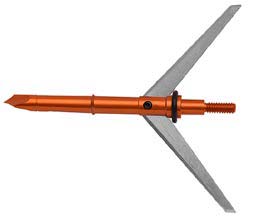
This two-blade broadhead has a massive, 2.75-inch cutting diameter. Despite such a large cutting surface, it’s designed for bows with higher kinetic energy. As a result, this thing can wreak havoc and leave massive blood trails. This broadhead is even said to work well with angled shots.
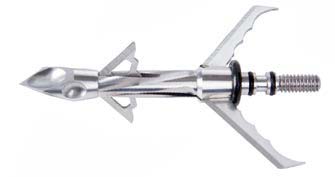
This head features a guaranteed 7/8-inch, fixed-blade cut, and a two-plus-inch mechanical blade cut. It has a concave air foil scoop for increased accuracy and penetration. It comes in a 100-grain three-pack offering.
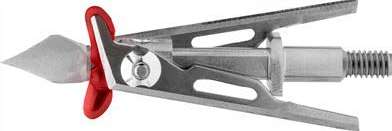
It has two blades and weighs 100 grains. The blade position creates a two-inch offset entry wound and a 3.625-inch total cutting surface. It’s a lethal broadhead that hunters can rely on.
Reasons Why You Might Miss Birds
Do you commonly miss turkeys with a bow? There’s still hope. Here are likely reasons for that happening.
- Gear Incompetency: Spend at least 10 or 15 minutes shooting each Make sure draw length, draw weight, arrow length, and other features fit you. Tune your bow and broadheads. Keep everything in working order. Practice often.
- Yardage Mistakes: Judging yardage can be So, use a range finder. It’s also important to learn to judge distances because you don’t always have time to range a target. Lastly, place your decoys at a yardage you know so you have a range marker.
- Untimely Draws: Knowing when to draw your bow is an important part of bowhunting Watch hunting videos of people bowhunting turkeys. Freeze the frame when the hunter draws back and study the entire seen. The best times to draw are when their eyesight is obscure (in full strut facing away, head behind a tree, etc.), when they’re heavily focused on the decoys, etc.
- Bad Shots: Turkeys are extremely They can take a hit. If you don’t make a good shot, that bird will most likely fly and die several hundred yards away. And it isn’t easy to blood-trail a turkey. So, wait for the right shot. Learn and understand wild turkey anatomy.
- Sheer Panic: An adrenaline rush and its effects can cause problems. Practice real- life scenarios. This will help simulate the real Use life-like 3D targets. And keep hunting. You’ll learn how to overcome “bird fever” with time.
Per our affiliate disclosure, we may earn revenue from the products available on this page.

